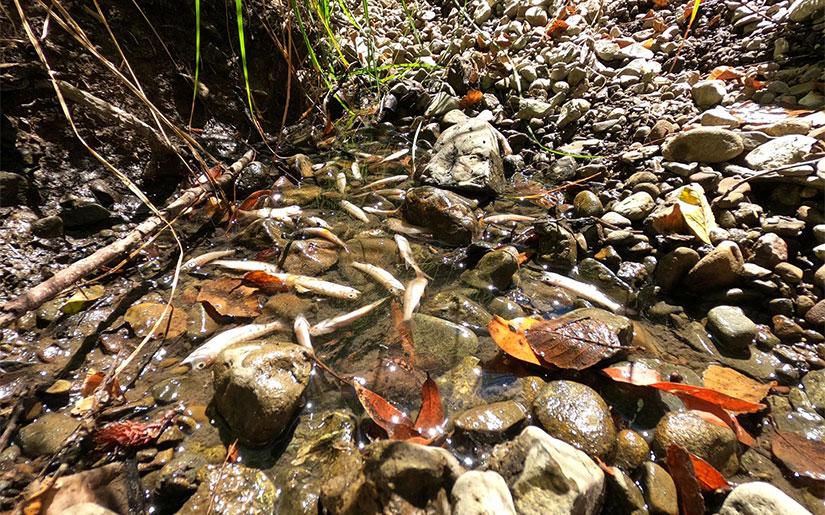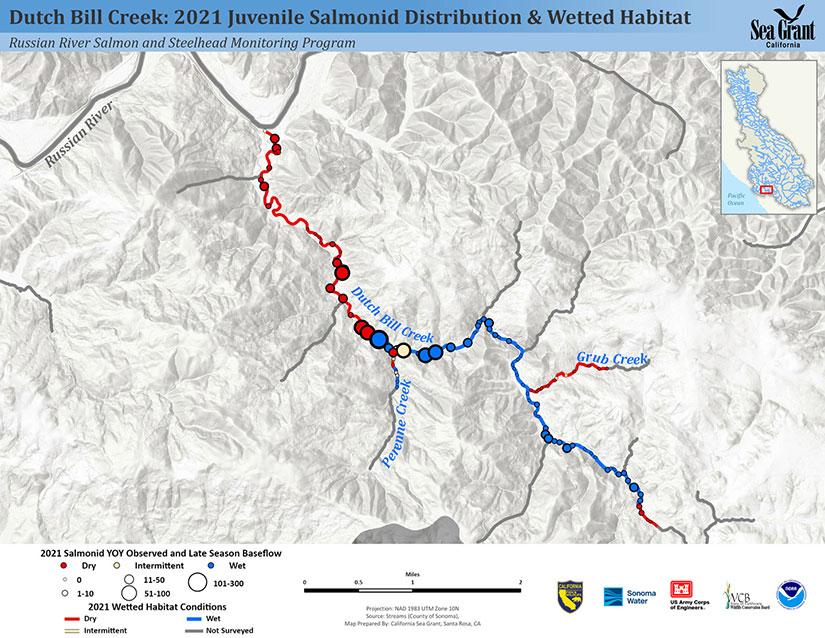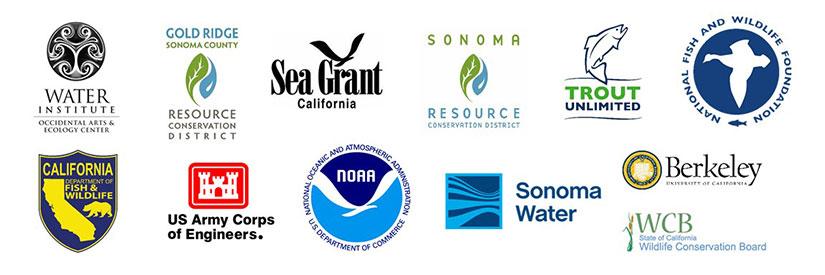Breadcrumb
- Russian River Salmon and Steelhead Monitoring Program
- Projects & Research
- Streamflow & drought
Streamflow & drought
Drought impacts

Insufficient summer streamflow is a significant limiting factor to recovery of Russian River salmonid populations. Drought is becoming more frequent and intense in our region. See this slideshow for an overview of the impacts of the extreme drought of 2021 on Russian River salmon and steelhead.
Wetted habitat mapping

By late summer, many of the stream reaches where juvenile coho and steelhead are rearing become intermittent or dry, leading to high mortality rates.
CA Sea Grant documented the impact of stream drying and flow impairment on salmonids over a decade by mapping the wet habitat available to fish during the driest time of year and overlaying the resulting maps with the same year's juvenile fish distribution data. The results of this spatial comparison show the lengths of stream where juvenile fish were observed that remained wet through the dry season, dried completely, or became intermittent.
We created this story map to describe the process and the 2020 season outcomes. Of over 120 miles surveyed in 45 streams in 2021, only half of the instream habitat sampled remained wet by late summer. See our last community update for 2022 outcomes.

In the peak of the previous drought in 2015, only 39% of the pools where juvenile salmon and steelhead were observed rearing remained wet through the dry season, on average across the 14 streams sampled. In the summer of 2021, only 30% of the habitat supporting rearing salmonids remained wet through the summer in those same streams.
Oversummer flow and coho survival

We conducted a long-term study to correlate flow and environmental conditions with oversummer survival of juvenile coho and found that the number of days that pools were disconnected from surface flow was the strongest predictor of fish survival, with survival decreasing the longer pools were disconnected. Through additional analyses, researchers at UC Berkeley confirmed that days of disconnection stood out as the most important predictor of fish survival, followed by percent cropland cover within the watershed and pool volume. Study outcomes were published in Transactions of the American Fisheries Society and Global Change Biology.
News: A LITTLE WATER MAKES A BIG DIFFERENCE FOR REARING SALMON
Supporting streamflow enhancement efforts
California Sea Grant is a member of the Russian River Coho Water Resources Partnership. This collaboration, formed in 2009, works to improve streamflow for fish and water supply reliability for landowners in key coho salmon streams by partnering with landowners to develop projects to augment or forebear water during the dry summer months. See the Partnership website for Russian River tributary Streamflow Improvement Plans, guidance documents on a wide array of topics, and more.

- Conservation Hatchery Program
- Salmonid Status & Trends
- Streamflow & Drought
- Habitat Enhancement Monitoring